Contents
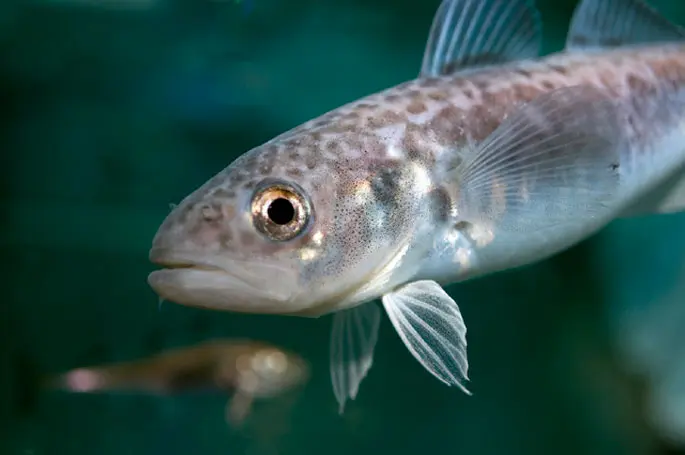
Saika fish belongs to the pelagic species of fish and belongs to the cod family. This fish is found in the waters of the oceans, preferring cold water. It is of industrial interest, although it is caught in small batches. Already at a water temperature of about +5 degrees polar cod is not found in the expanses of the world’s oceans.
Saika fish: description
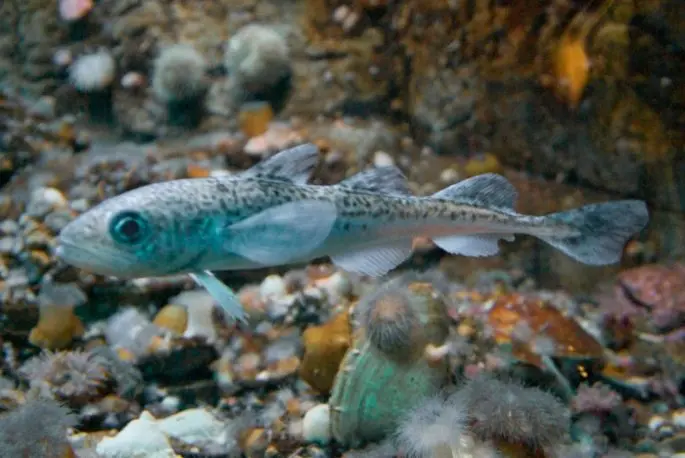
Saika is also called polar cod (codfish). This fish represents the only species of sai in the monotonic genus of this species. This is a cold-loving fish that prefers the expanses of the Arctic for its life. In terms of body shape, it is similar to cod, but at the same time it differs in slightly smaller sizes. The main habitat extends to the arctic zone, as well as brackish lagoons and the mouths of northern rivers flowing into the northern seas.
Appearance
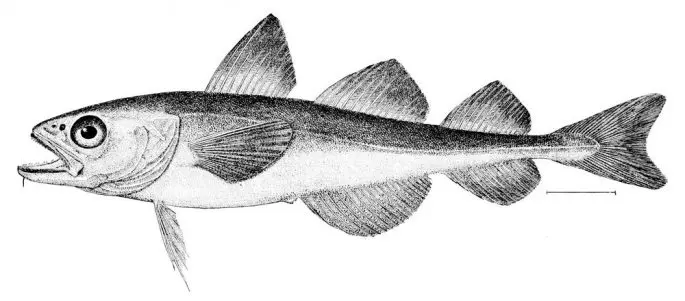
Saika is one of the smallest representatives of the cod family. It grows in length up to 25-30 cm no more, although there are individual specimens up to 45 cm long. At the same time, the fish weighs no more than 300 grams. The body is elongated and narrows strongly towards the caudal part of the body. There are large gaps between the dorsal and anal fins. The caudal fin is distinguished by a deep notch, and the ventral fin by the presence of a filiform ray.
If you compare the head in relation to the body, then the head is disproportionately large. The eyes are quite large, we can say that they are also disproportionate. The lower jaw is longer than the upper jaw. At the end of the lower jaw is a thin mustache, which is not always noticeable. The color of the back and head is grayish brownish, and the sides and belly are distinguished by a silvery tint with yellowness, although there are individuals with a purple tint. Due to the thin and long body, the polar cod moves quickly enough in the water. Thanks to its interesting coloring, the fish perfectly camouflages itself in the water column, moving away from its natural enemies, which the fish have in abundance.
Behavior and lifestyle

Saika prefers to lead a flock of life, so it makes its main migrations in the vertical direction. Day and night it can be seen in the water column, and in the morning and evening it descends into the bottom layers. The most cold-loving fish prefer to be closer to the surface of the water, where the ice melts. At the same time, it prefers a temperature regime that is at the level of 0 degrees or even below zero.
Interesting fact! Saika withstands such temperatures because a special substance glycoprotein flows in her body, which does not allow her to freeze.
With the advent of autumn, schools of fish are formed quite numerous, and they begin to approach the coastal zone. As a rule, during this period they are often found in the mouths of rivers.
How long does a saika live
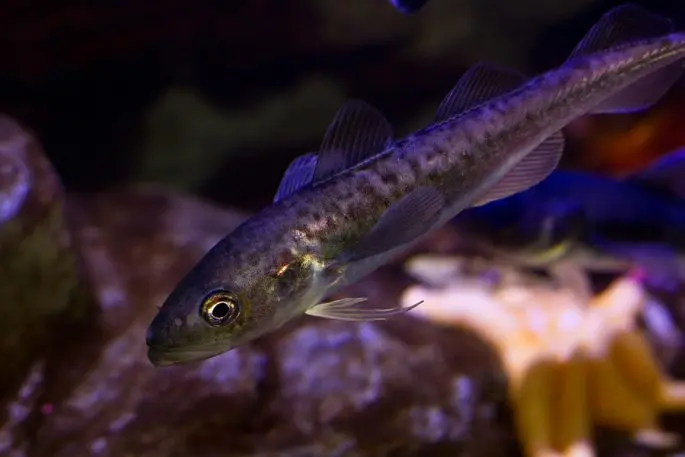
The fish, although small, is considered a long-liver, since on average it lives about 5 years. In the wild, many individuals live up to 7 and a half years. As for the Arctic latitudes, this life expectancy is considered relatively long.
natural habitats
Saika fish is an inhabitant of all the seas that are part of the Arctic Ocean basin. Its natural habitats are coastal waters, as well as waters covered with floating ice floes. Saika fish is able to descend to a depth of 900 meters. It can also be found north of 85 degrees. Huge populations of this fish are found in the Kara Sea, within Novaya Zemlya, as well as in the bays of Pyasinsky and Yeniseisky.
Diet
Polar cod is a small fish, so its diet consists of phytoplankton, zooplankton, small euphausean crayfish, as well as fry of fish such as gerbil and smelt.
Reproduction and offspring

Somewhere in 3 or 4 years, when individuals reach a length of about 20 cm, the polar cod fish is ready for breeding. Fish spawning is carried out in autumn and winter, since polar cod has frost-resistant eggs and swims well. Therefore, even sub-zero temperatures do not have a negative impact on eggs and their development. During the spawning period, the Arctic cod approaches the coastline and does not feed on anything during this period.
It is important to know! Each individual, depending on the size, lays from 7 to 50 thousand eggs. After that, the fish leaves the coastline and goes to the sea, and the fertilized eggs are carried by the current throughout the water area. Within 4 months, the eggs are in the sea, and at the end of spring, polar cod fry appear from them.
The fry grow and develop quite quickly and by the age of 3 or 4 they reach a length of almost 20 cm. After that, the polar cod grows a couple of centimeters annually. Their self-feeding begins with small plankton, which abound in the water column. As the fish grows older, it begins to catch fry of other fish. The polar cod spawns once in a lifetime.
Natural enemies
Saika fish plays a rather important role in the ecosystem of the northern regions. Almost all living creatures that live in the expanses of the north feed on this fish. Often it is for them – this is the only source of existence.
Population and species status
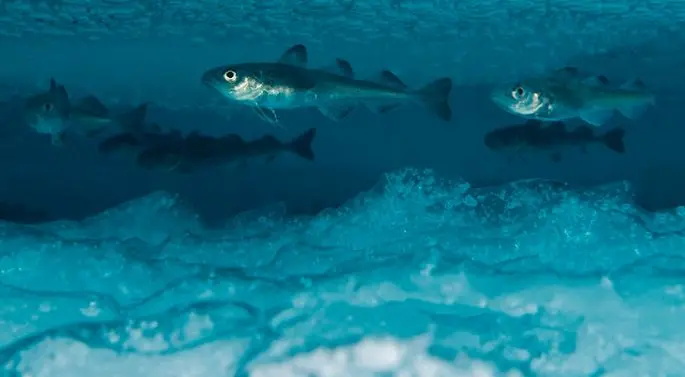
The number of polar cod fish throughout the year is unstable and subject to fluctuations. Often you can observe numerous flocks of polar cod. There are about 100 species of this fish, which differ in size.
Species that feed on plankton are not large in size. The deep-sea gadikul is the smallest representative of this family and grows up to 15 cm in length. Atlantic cod and molva are the largest representatives of the family, with a body length of up to 2 meters.
Fishing value

Saika does not belong to the category of valuable commercial fish. Its meat, although rich in protein, is rough and watery, with a hint of bitterness. It does not have an exquisite taste, therefore it is used only after special processing. Despite this, the polar cod is dried and smoked, and they also make canned food. This fish is ideal for making fishmeal and animal feed, as there are a lot of bones in its meat.
Interesting to know! With the advent of autumn, the polar cod heads south and west, and from October to March, the fish begins to actively feed. It was during this period that it was caught on a commercial scale.
The meat of the polar cod, although it does not have a pleasant taste, is very nutritious and healthy.
The white meat of the polar cod contains a lot of protein and other nutritious and useful components, including omega-3 polyunsaturated fatty acids. In addition, its meat has a fairly high content of iodine. Meat is generally low in calories, so it is suitable for preparing dietary dishes, especially since it is easily digestible.
Although it is believed that the meat of the polar cod does not have high palatability, they are higher than that of the same capelin or Baltic herring. Still, polar cod is the same cod, albeit a small one. The advantages of this small fish is that it can be eaten even by those who have a pronounced hyperfunction of the thyroid gland, which leads to a high concentration of iodine in the body. Polar cod is also suitable for those who eat boiled shark fins or sturgeon kebabs every day: after all, cod is a small cod, no matter what they say about it.
Arctic cod Boreogadus saida









